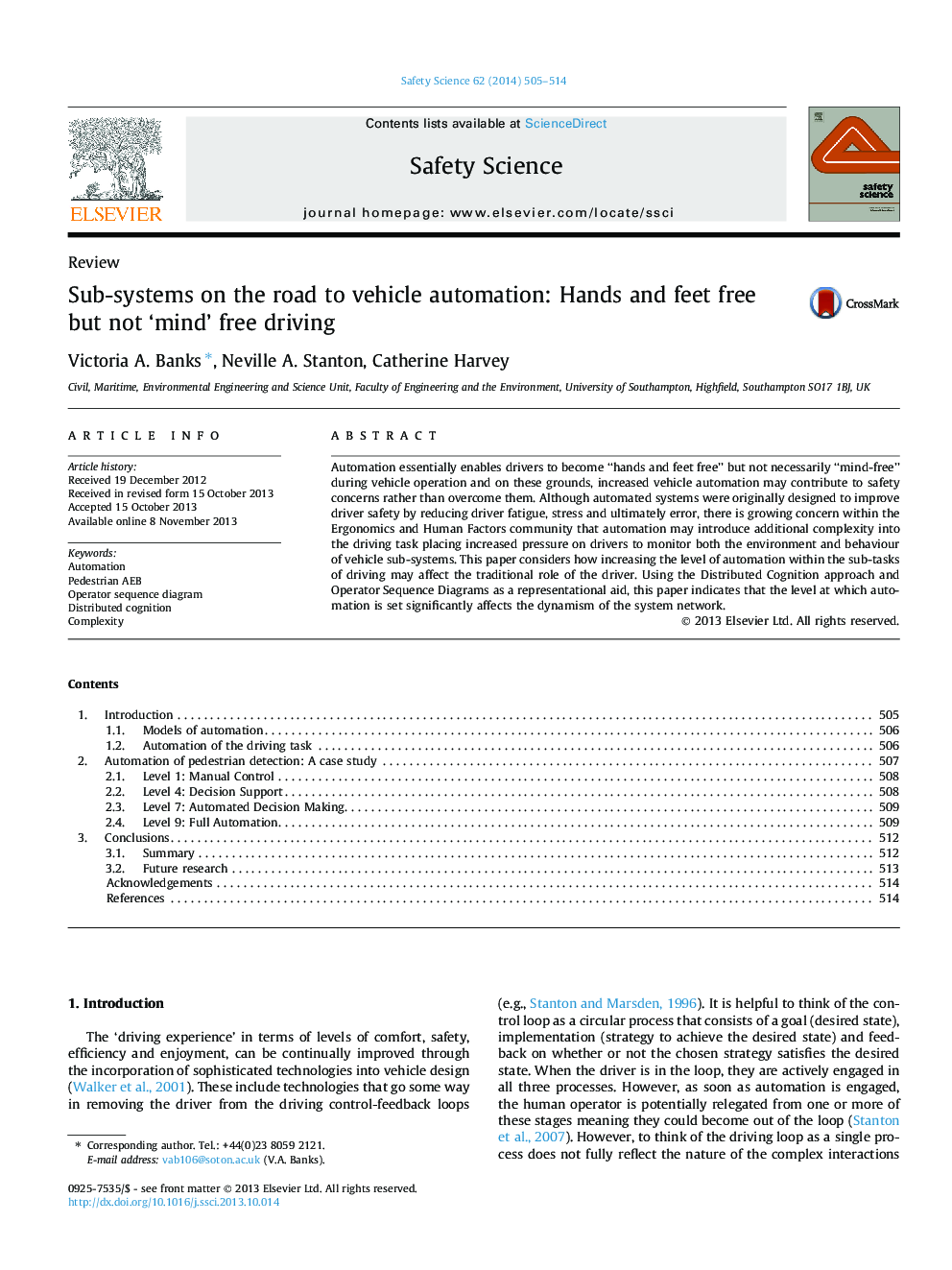| Article ID | Journal | Published Year | Pages | File Type |
|---|---|---|---|---|
| 589255 | Safety Science | 2014 | 10 Pages |
•Identification of distributed cognition for individual sub-systems.•Identification of the challenges for vehicle automation.•Increasing level of automation changes the interaction that occurs between actors within the driving system.
Automation essentially enables drivers to become “hands and feet free” but not necessarily “mind-free” during vehicle operation and on these grounds, increased vehicle automation may contribute to safety concerns rather than overcome them. Although automated systems were originally designed to improve driver safety by reducing driver fatigue, stress and ultimately error, there is growing concern within the Ergonomics and Human Factors community that automation may introduce additional complexity into the driving task placing increased pressure on drivers to monitor both the environment and behaviour of vehicle sub-systems. This paper considers how increasing the level of automation within the sub-tasks of driving may affect the traditional role of the driver. Using the Distributed Cognition approach and Operator Sequence Diagrams as a representational aid, this paper indicates that the level at which automation is set significantly affects the dynamism of the system network.
